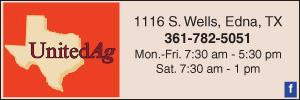The Greater Earless Lizard (Cophosaurus texanus) is the only member of its genus that is found in the United States and it is primarily of Texan occurrence. While it can be commonly observed throughout the Big Country, Edwards Plateau, Trans-Pecos, and south Texas thorn-scrub eco-regions it barely occurs in the central portions of the Panhandle, roughly ranging from Amarillo southward. It also occurs westward to central Arizona, and then southward into central Mexico.
The habitat that this relatively conspicuous lizard prefers is arid to semi-arid rocky arroyos, rocky hillsides, and rocky fields. Basically, if there is an area with abounding rocks, this lizard likely thrives there. The jumbled masses of large rocks strewn along caliche county roads are frequently utilized as basking and hunting sites.
The Greater Earless Lizard is taxonomically divided into two races: the Southwestern Earless Lizard (C.t.scitulus) in the Trans-Pecos area and the Texas Earless Lizard (C.t.texanus) everywhere eastward. These two races are almost identical save for a few color discrepancies.
The Texas Earless Lizard is the more dull-colored of the two races, with the background coloration ranging from brown to tan to gray, depending on the soil substrate on which it lives. The darker the soil, the darker the background coloration of the lizard. There is occasionally a double row of faint spots that run lengthwise down the spine, but the most conspicuous markings along the back are the two black lateral bars that occur about midway on the body. These bars are much more apparent on the males than on the females.
The Southwestern race is patterned the same as its more easterly cousin except for the background coloration in front of the lateral bars tend to be shades of red, while the back end and back legs are shades of light green. The scales on the back are small and granular in appearance and texture, and as the common name implies, there are no external ear openings.
Males are the larger sex, achieving total lengths of up to seven inches. Just over half of this total length is comprised of the tail. The tail is actually the most conspicuous markings that are noticed on this species. While patterned similar to the dorsum on top, the underside of the tail is marked with large black bars. These bars are eye-catching as this lizard scampers from a potential predator for it curls its tail above its back and waves it back and forth in an almost teasing manner when it comes to rest on the safety of a distant rock.
Greater Earless Lizards, like other lizard species, are “cold-blooded”, or ectothermic. This means that they do not generate heat from the inside of their body, as mammals and birds do, but rather are dependent on outside sources for heating and cooling. They are active throughout the day from early April to October, and unlike many other reptile species, the high metabolism of this lizard enables it to be observed as they bask on their rocky habitats during the hottest part of the summer afternoons.
This species of lacertian feeds exclusively on insects, particularly ones that fit easily into its small mouth. Moths and flies are apparent favorites, although any small beetles are gobbled up with enthusiasm.
The Greater Earless Lizard is oviparous, which is a fancy way of saying that it lays eggs. After emerging from the winter-long brumation period (reptiles do not hibernate in the true sense of the word), males will search out females to mate. After mating, the female will lay a small clutch of eggs (between two and seven, average five) in moisture retaining soil. After approximately two months of incubation, the two-inch-long young replicas of their parents emerge prepared to fend for and care for themselves.
These lizards are gregarious baskers and many are observed while holding their heads up high while perched on their rocky fortress.





















